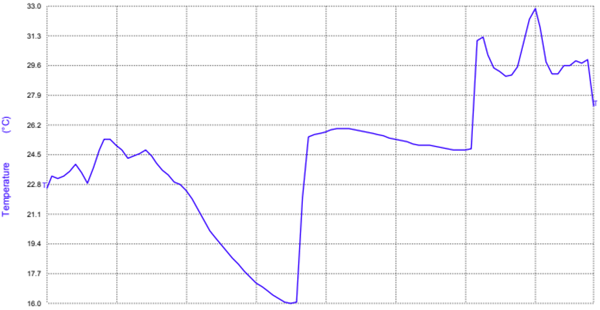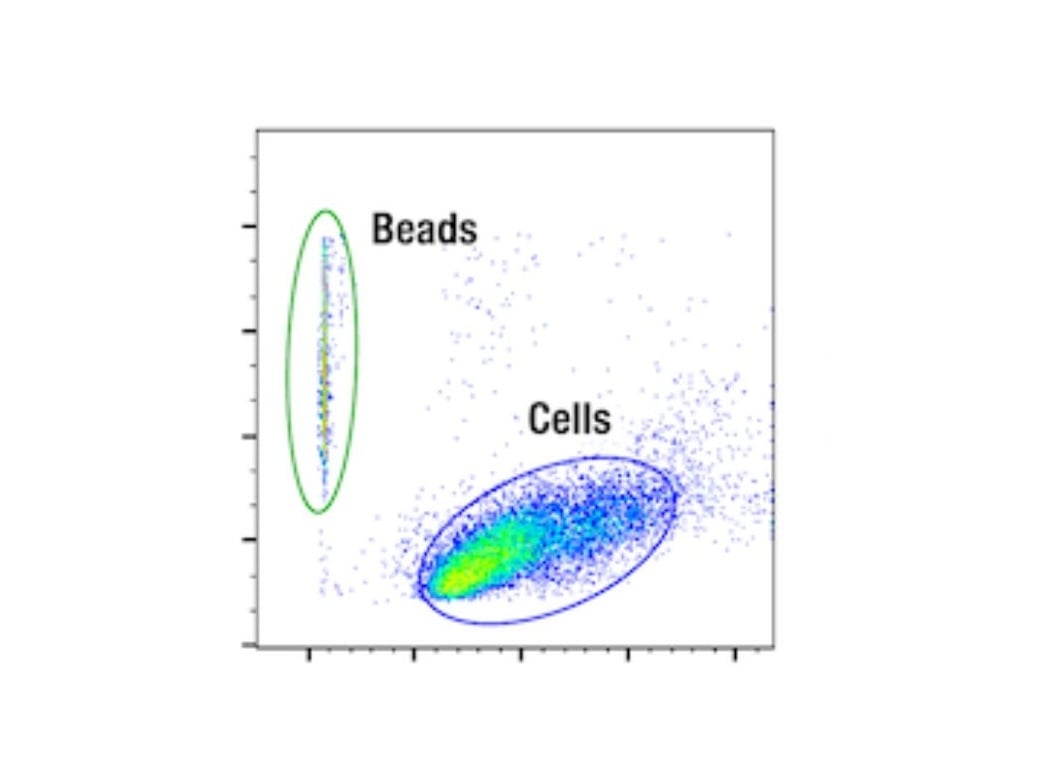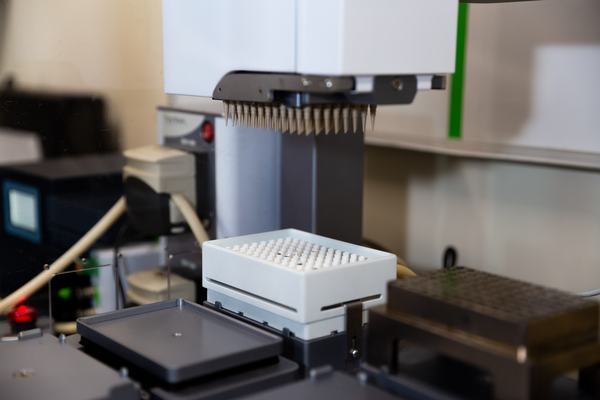Did you know that around 60% of CST® antibodies are shipped at room temperature, eliminating the need for cold chain shipping? This practice is part of our corporate climate goal to achieve net-zero greenhouse gas emissions by 2029—and the impact is significant.
Cold supply chains are resource-intensive, estimated to produce more than twice the greenhouse gas emissions of ambient shipping—not to mention the additional waste from materials such as expanded polystyrene (EPS) coolers, ice and gel packs, and multi-layered thermal packaging.1-3 These materials are not only challenging to recycle, they take up valuable space in the lab—and in landfills.
CST has eliminated single-use Styrofoam from our supply-chain. All product packaging is either recyclable, compostable or returnable.
CST was the first antibody manufacturer to ship reagents at room temperature, a practice we’ve had in place since 2006. With over two decades of experience, we can guarantee that CST antibodies shipped at room temperature maintain their long-term stability and will perform as expected in your experiments.
CST is the only antibody manufacturer that conducts stability testing on every reagent in our product catalog. All antibody products undergo this critical stability testing step before release, and it’s a component of the rigorous validation procedures that are the reason we can guarantee the performance of our antibodies.

Additionally, we use a 100% recycled shipping envelope for products shipped at room temperature and soy inks for printing labels. When cold shipping is required, we use ClimaCell Thermal Liners, an alternative to EPS that provides effective insulation using paper-based materials while reducing emissions by 35% per package. With ClimaCell, CST prevents over 24,000 cubic feet of EPS packaging from reaching landfills every year and reduces carbon emissions by nearly 60 metric tons of CO₂ equivalent (MTCDE).
We've also optimized our product packaging to minimize material use and shipping box sizes, including using biodegradable product bags where appropriate. Overall, our goal is to reduce package sizes for more efficient shipping—a practice that means minimizing the packaging waste and storage requirements for your lab, too.
“If we can do something in a way that is both sustainable and enables good science—we do it. Recyclable packaging and ambient shipping are high-impact areas where we make a real difference in our carbon footprint.”
~ Seneca Stone, VP, Global Supply Chain
Below, Seneca Stone, VP of Global Supply Chain Operations at CST, answers some of the common questions we receive about our sustainable shipping practices and antibody stability.
What is ambient shipping?
Ambient shipping refers to transporting products at room temperature—typically within a controlled range of 15°C to 25°C, similar to standard indoor conditions. The temperature-controlled method is especially relevant for materials such as certain biological reagents, chemicals, or laboratory supplies.
In recent years, ambient shipping has become more common due to its cost efficiency, reduced environmental impact, and logistical simplicity. Unlike cold chain shipping, which requires refrigeration or freezing throughout transit, ambient shipping eliminates the need for additional packaging while preserving product integrity for validated items.
为何我的大部分 CST 订单产品都在室温下运输?
We pride ourselves on providing top-quality antibodies, and stability testing is central to maintaining that quality. Many of our antibodies remain stable at ambient temperatures during the short shipping window, which means they don’t require cold chain logistics.
In fact, roughly 60% of our antibodies are shipped without any cooling measures. Around 39% require cold shipping, while less than 1% require sub-zero conditions.
How do you determine the ideal shipping conditions for antibody stability?
Each CST antibody undergoes a thermal stability test to simulate real-world shipping scenarios. Samples are stored for one week at three different temperatures: −20°C、室温和 37°C。At the end of this period, the antibody is tested to assess the effect of temperature variation on performance.
For example, Phospho-p44/42 MAP Kinase (Thr202/Tyr204) Antibody #9101 maintains consistent performance after storage at all three temperatures for one week:

If your antibody arrives at room temperature, you can be confident it has been thoroughly tested and will perform as expected. View the CST antibody stability test results for more information.
What about antibody stability when shipping during hot summer weather?
Exposure to higher temperatures during transit in the summer months is a valid concern—especially as global temperatures rise due to climate change. That’s why our stability testing includes storage for one week at 37°C (98.6°F)—a temperature selected to mimic potential peak exposure. We continue to actively monitor the added climate-related risks of rising annual temperatures and assess their potential impact on peak exposure temperatures.

Example testing data from shipments to Turnbull, Texas (left), where the outside air temperature reached over 37°C during shipment. Note that the highest temperature recorded was 33°C.
We recently monitored the maximum temperatures reached during shipping to ensure that products didn’t exceed this threshold. This testing was carried out during the summer in select cities in the United States that are known to reach high temperatures. During the 24-hour shipping period, none of the packages we tested exceeded 37°C.
为什么货件与货件之间的温度有差别?
The shipping temperature depends on the combination of products in your order. If every item has been validated for ambient shipping, we ship the order without cooling materials. 但如果其中一项或多项需要冷冻运输,那么对于整个订单,将产品存放在 2 - 8 °C 之间的包装中进行运输,直到抵达你的实验室。
If you usually receive ambient shipments but notice a cold-packed delivery, it likely means a new item added to the order requires temperature control during shipping.
这是否意味着我可以在室温下储存我的抗体?
In most cases, long-term storage at ambient temperature is discouraged because it could lead to antibody degradation. 您应查看收到的每种抗体的数据表,以确定适当的储存温度。In most cases, your storage temperature will be −20°C, although some antibodies may be stored at 4°C. 正确的储存温度已列在小瓶上。
Data sheets for each CST antibody are available on our product webpages so you can easily identify or double-check the proper storage temperature for your antibodies.
Why not just ship everything cold?
Because doing so would undermine a key sustainability opportunity. By validating antibody stability under different shipping conditions, CST is able to reduce material waste and emissions while maintaining the highest product quality. Ambient shipping isn’t just safe—it’s a deliberate choice that reflects our commitment to both responsible science and responsible environmental practices.
Learn More About Sustainability at CST
Selecting suppliers who prioritize sustainability—from manufacturing practices to shipping methods—can meaningfully support a lab’s efforts to reduce its environmental footprint. Ambient shipping is one example of a focused, incremental change that, over time, contributes to broader and longer-lasting environmental benefits.
CST is a proud member of 1% for the Planet, through which we donate 1% of our total annual revenue to nonprofit organizations to help preserve the Earth’s biodiversity, mitigate climate change, and protect our planet.
- Learn more about our product performance guarantee.
- Download the 2024 Social and Environmental Impact Report from CST to learn more about sustainability at CST.
- Learn more tips for greening your lab: Four Key Impact Areas for a More Sustainable Research Lab.
参考文献
- Bertolini, M., Bottani, E., Rizzi, A., & Bevilacqua, M. (2016). "Comparative Life Cycle Assessment of Packaging Systems for Fruit and Vegetables Transport in Europe." Journal of Food Engineering, 170, 170-179.
- Tähkämo, L., Halonen, L., & Tetri, E. (2012). "Energy consumption and environmental impact of refrigerated transport in food supply chains." International Journal of Sustainable Engineering, 5(2), 154-165.
- U.S. Environmental Protection Agency. Documentation for greenhouse gas emission and energy factors used in the waste reduction model (WARM). www.epa.gov/sites/default/files/2020-12/documents/warm_containers_packaging_ and_non-durable_goods_materials_v15_10-29-2020.pdf








 沪公网安备31011502018823号
沪公网安备31011502018823号